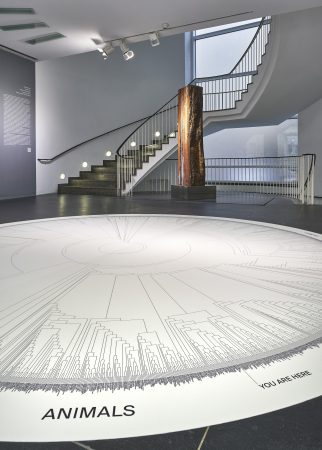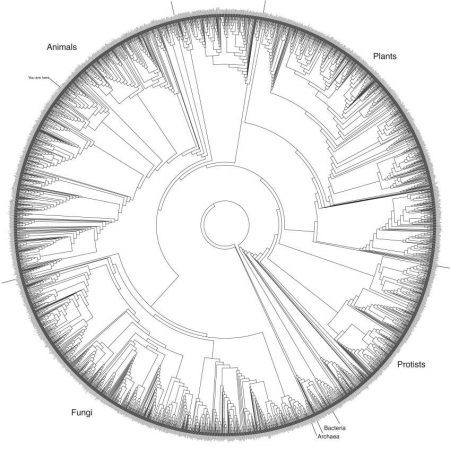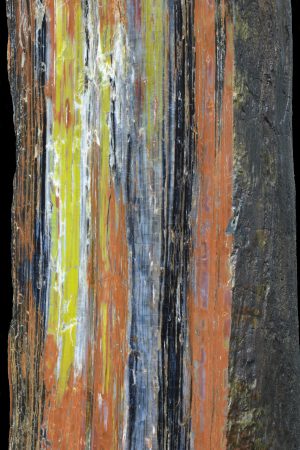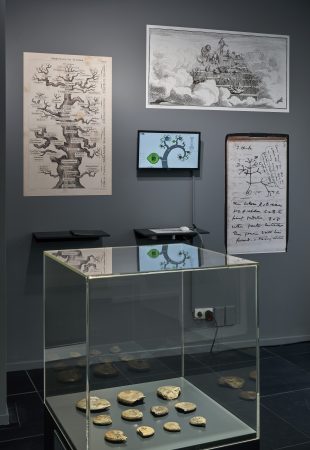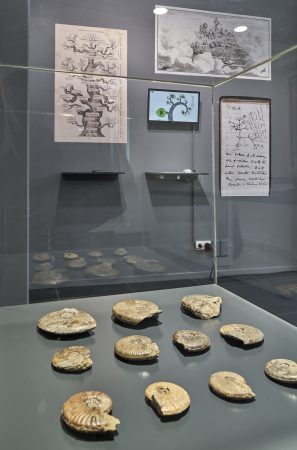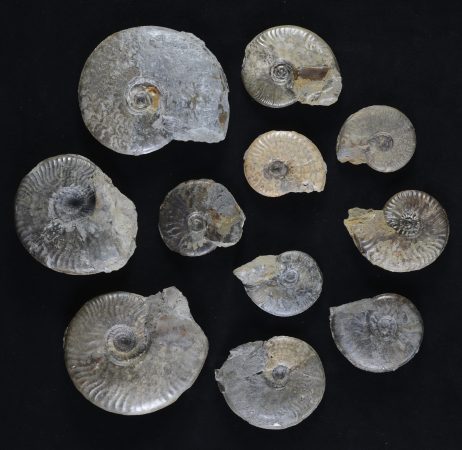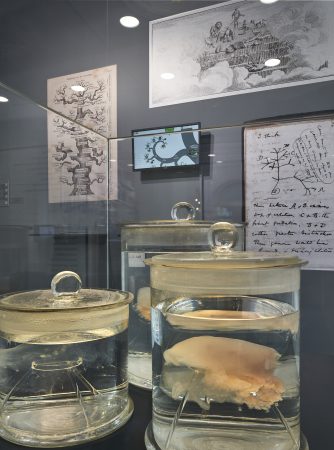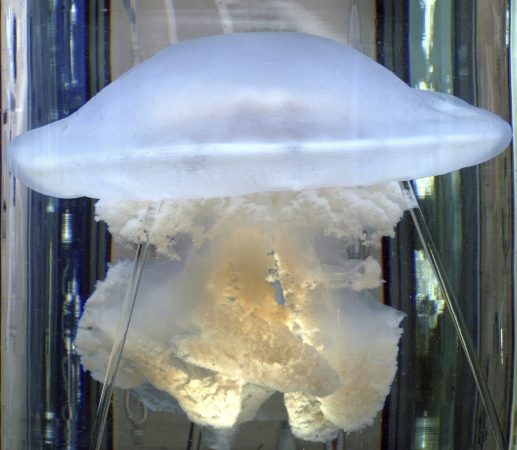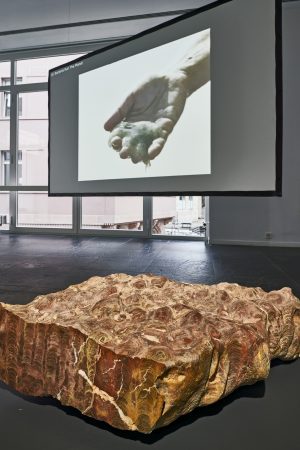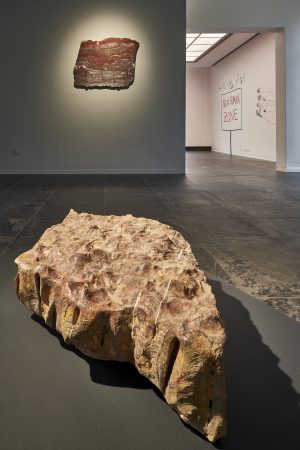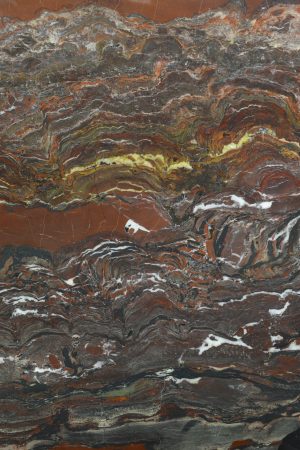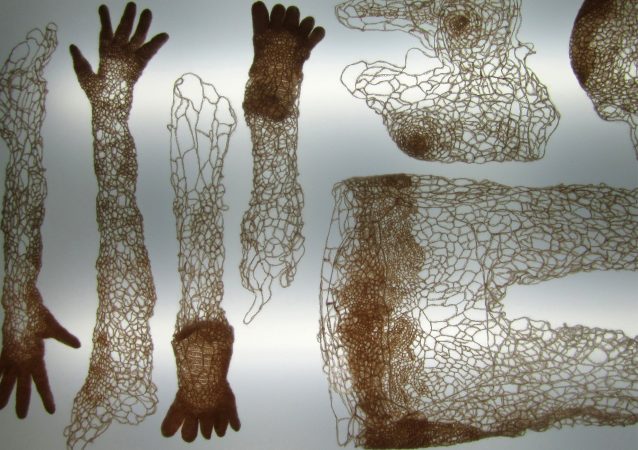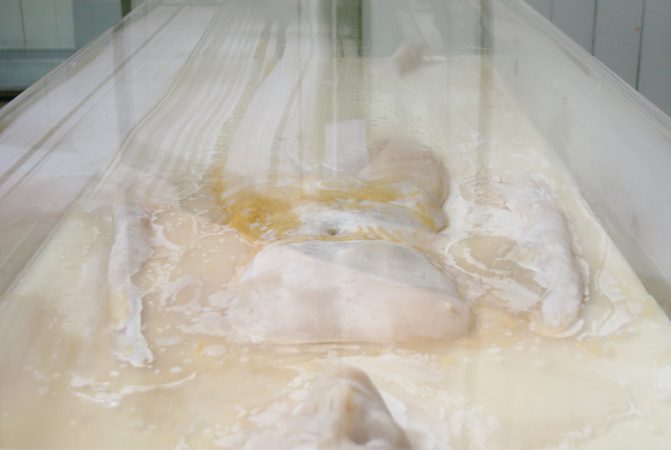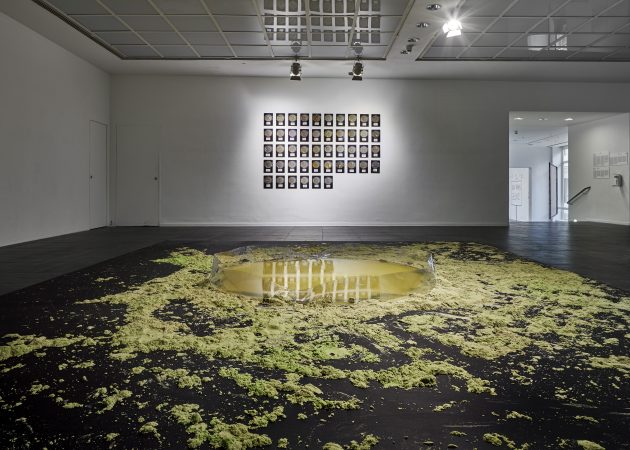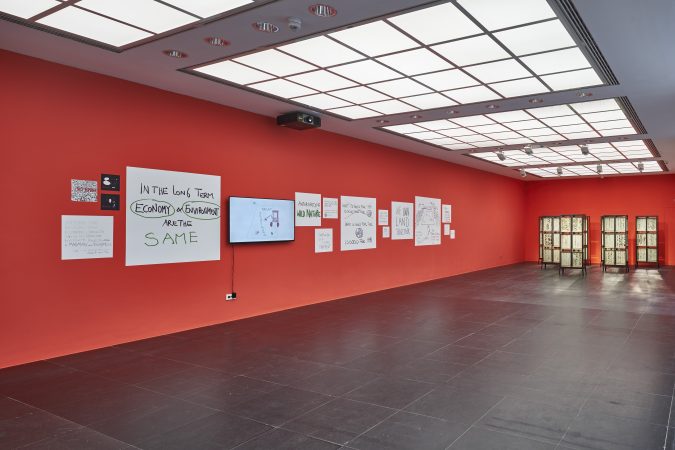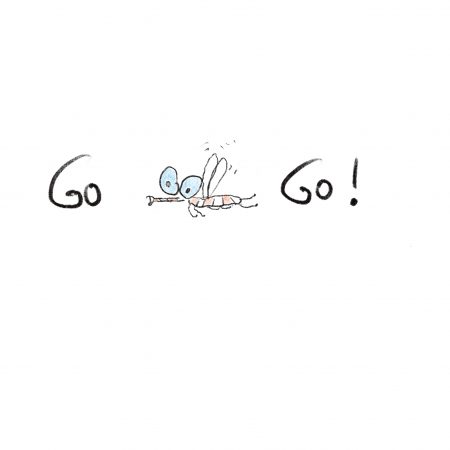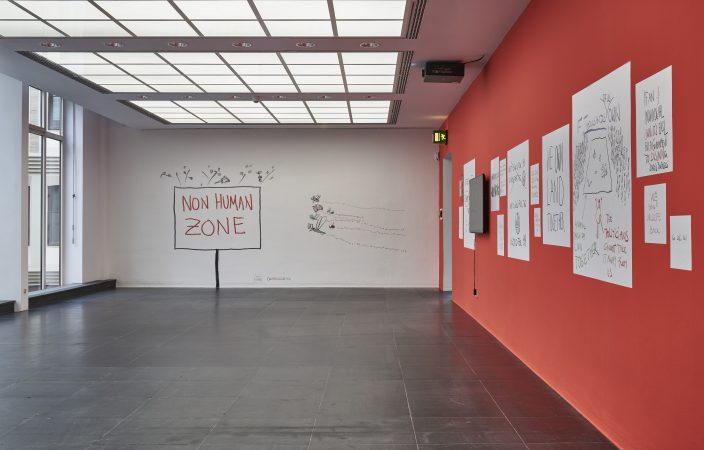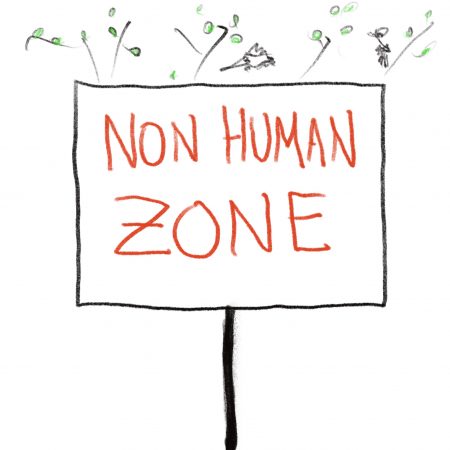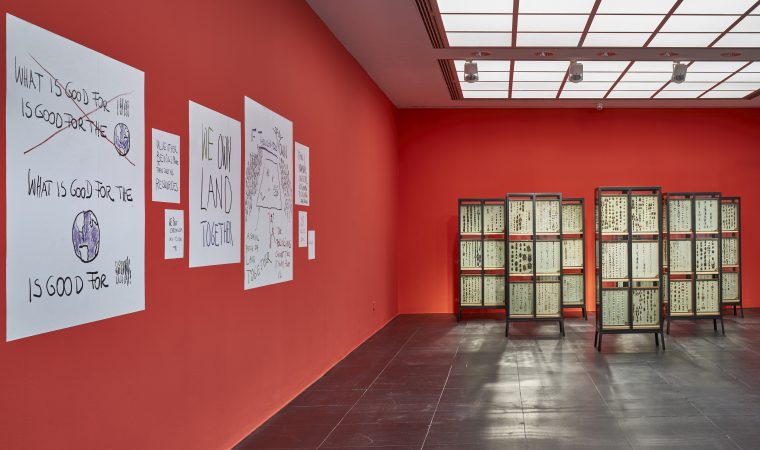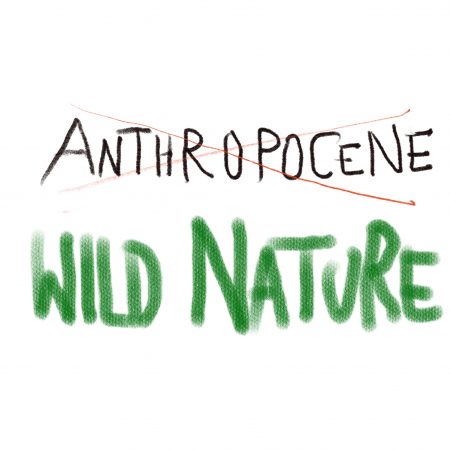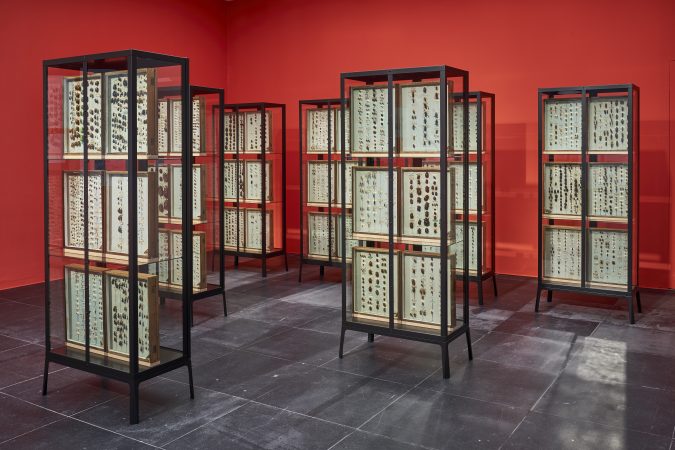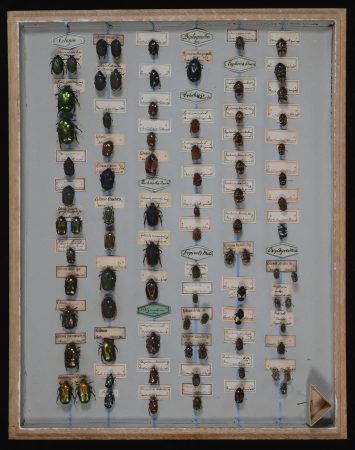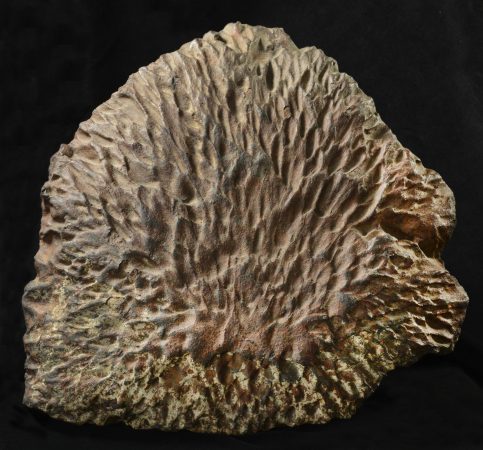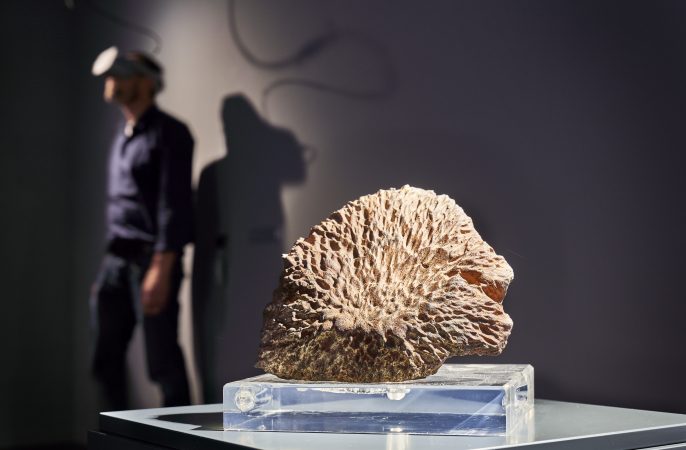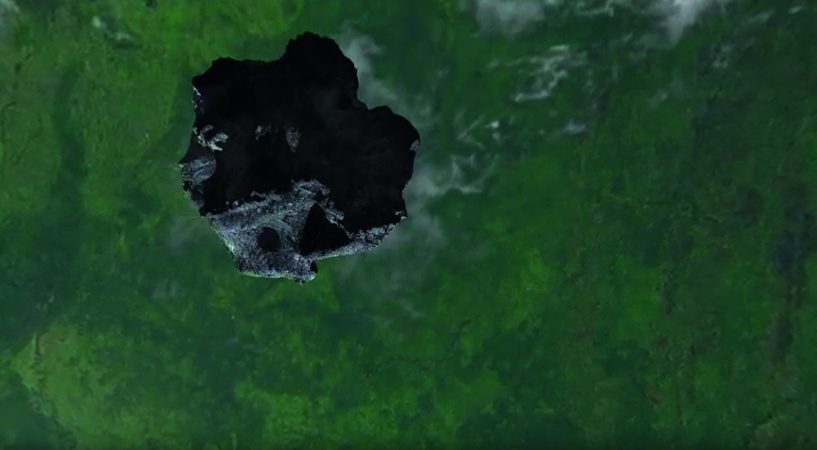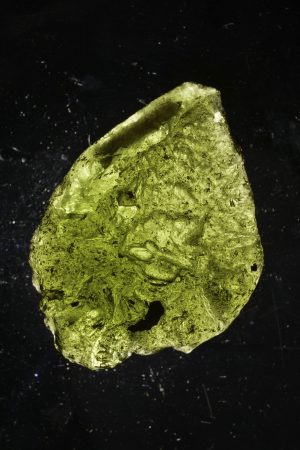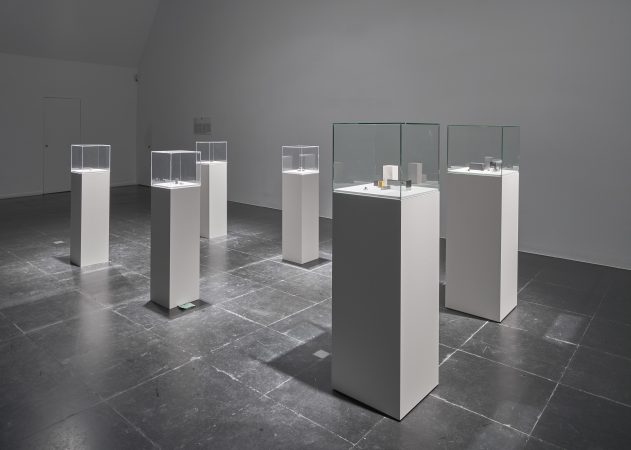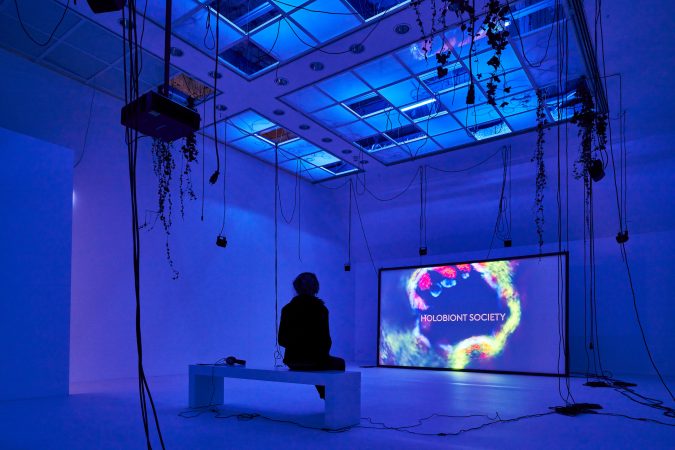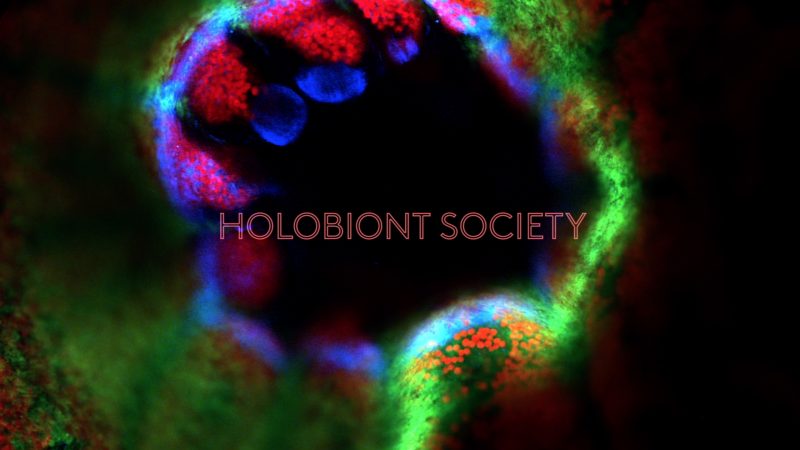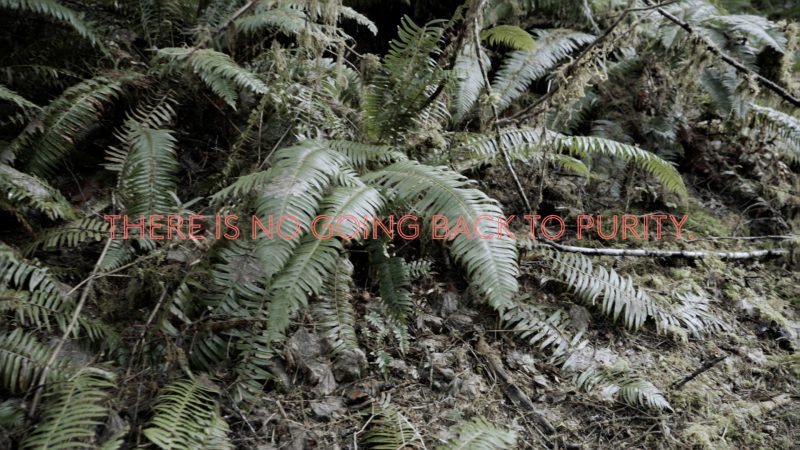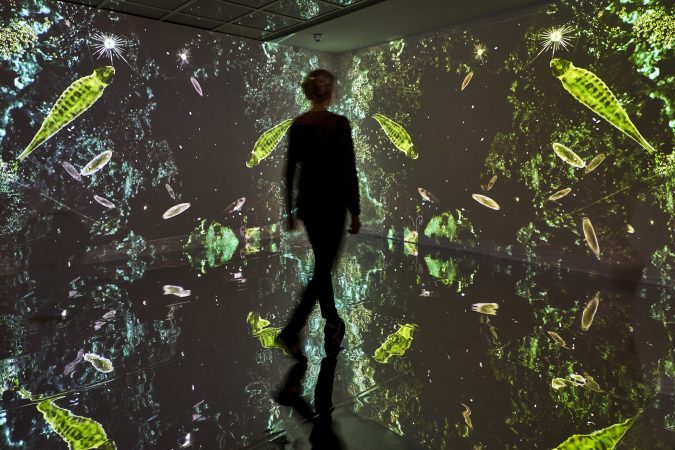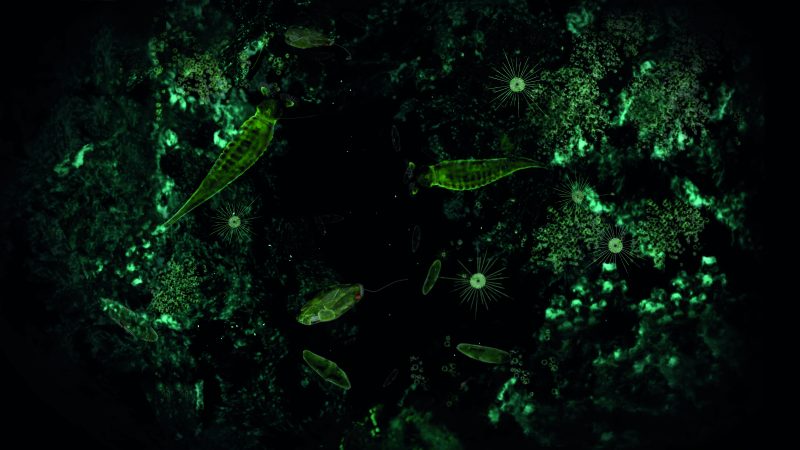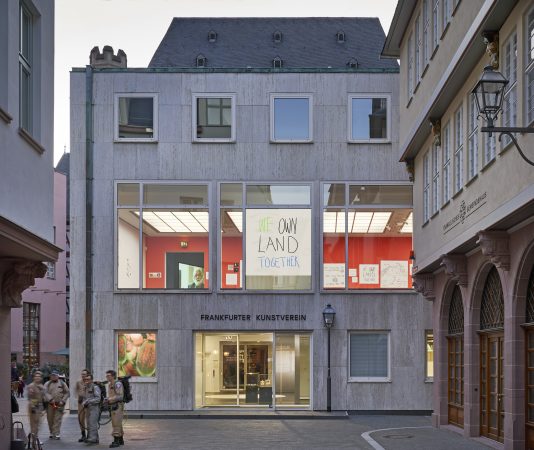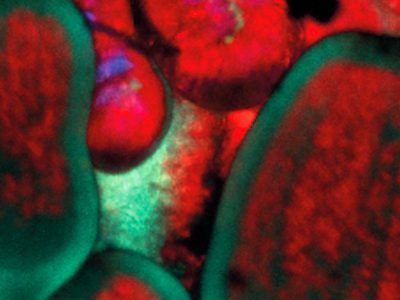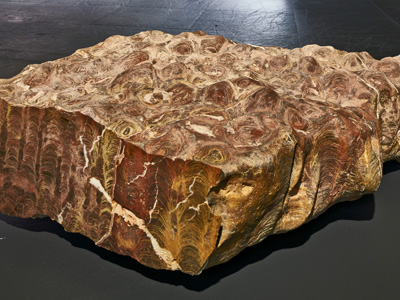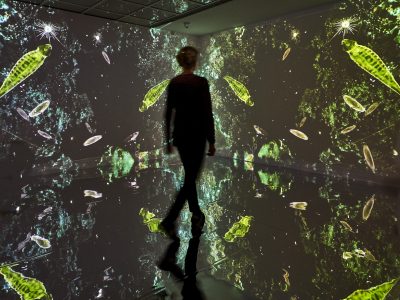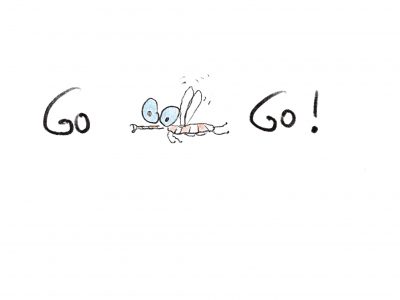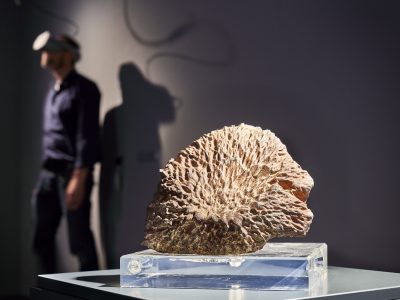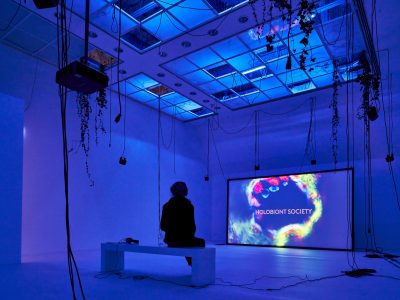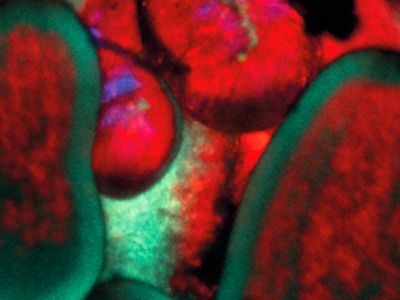Trees of Life – Stories for a Damaged Planet
10.10.2019 — 16.02.2020
Participating Artists: Sonja Bäumel, Studio Drift, Edgar Honetschläger, Dominique Koch, with exhibits from the Senckenberg Collections
Opening: Wednesday, October 9, 2019, 7 pm
Curatorial text: Franziska Nori
From 10th October 2019 to 19th January 2020 Frankfurter Kunstverein presents the exhibition “Trees of Life – Stories for a Damaged Planet” in cooperation with the Senckenberg Nature Museum Frankfurt. The interdisciplinary exhibition project leads our gaze away from a historically informed anthropocentric worldview toward a systemic conception of humanity as part of the evolutionary process.
For the exhibition, contemporary artists have produced works and installations that enter into thematic dialogue with scientific exhibits from the Senckenberg Museum’s collection. The exhibition project is accompanied by a series of panel discussions where authors, natural scientist, philosophers, and economists discuss and explore this thematic spectrum together.
The presentation encompasses all of the Frankfurter Kunstverein’s exhibition spaces. The invited artists include Sonja Bäumel (Austria, lives and works in Amsterdam), Edgar Honetschläger (Austria, lives and works in Vienna, Rome, and Tokyo), Dominique Koch (Switzerland, lives and works in Basel and Paris), and the artist collective Studio Drift (Netherlands, lives and works in Amsterdam). An entire room is devoted to each of the participants. The exhibition is curated by Franziska Nori (director of Frankfurter Kunstverein) in collaboration with Philipe Havlik (scientific advisor from the Stab Zentrale Museumsentwicklung der Senckenberg Gesellschaft für Naturforschung). It came about as the result of many years of preparation and planning as well as numerous discussions between Volker Mosbrugger (director of the Senckenberg Nature Museum’s research institute) and Franziska Nori. One of the recurring questions in these discussions was how one can translate factual information from sphere of numerical abstraction into the sensory experience of reality. Ultimately, the idea for the exhibition developed out of the shared conviction that both art and science can facilitate the experience of expanded forms of knowledge in ways previously unknown.
The human mind strives to create meaning. We construct a continuous internal system that crystalizes experience into knowledge over time. Through the interplay between sensation and cognitive orientation, not only do we form concepts and language, but also images and narratives which we use to grasp our relationship to the world: to things, and to that we observe as real.
Our conceptions of reality are bound up with the state of knowledge at a given time within a given culture, which in turn lends our convictions their form of expression. These conceptions also simultaneously generate power structures and moral categories. Observing these phenomena from a temporal distance, it is easy to see just how mutable conceptions of reality are. Histories, narratives, and metaphors eventually become societal norms that then set rules, manifest conceptions of reality, and produce social models. Every era and culture has produced its own narratives, discarded, or even forgotten them, only to rediscover them later. Science historian Donna Haraway has asserted that knowledge is situated. It emerges from a specific environment, a cultural and historical moment, which is subject to processual changes. Many wars have been, and continue to be waged on the basis of opposing worldviews.
So that we may insert ourselves into a structure, human narratives such as the anthropocentric view are used to construct meaning from a perspective that sees us at the center. At the beginning of the exhibition “Trees of Life – Stories for a Damaged Planet,” one encounters Charles Bonnet’s 18th-century illustration of the Aristotelian idea of the Scala Naturae. This visual metaphor is but one of many that try to grasp the web of life within an image. As a multi-leveled model of nature, the Scala Naturae encapsulates the philosophical worldview of classical antiquity which survived for millennia. In this view, humanity is cast as the connecting link between creative divinity and the natural world. Descartes and the enlightenment constructed the first dualities; they formulated separations through which humans were contrasted with an objectified world: nature that could now be measured. Nature became inanimate matter to be formed by the human mind and its technology.
The mechanistic worldview was established with the rise of the western Enlightenment and subsequently promoted the objectification of the world. During the transition from the 16th to the 17th century, the work of René Descartes (1596–1650) and Galileo Galilei (1564–1641) initiated a process of quantifying the world. This period saw the use of observation and mathematical rules to study nature, rendering its underlying mechanisms predictable. In the words of author Raul Schrott, “having overcome the makeshift construct of the divine, one is faced with an attempt to measure the world with the arrogance of human proportions” [Raoul Schrott, Erste Erde, p. 21].
Ultimately, this disenchanted the world. On the one hand it liberated us from suspicion and enabled a new conception of already familiar phenomena. On the other, nature became an inanimate object; a machine that humans could study and master according to Descartes. Dualism between humans and nature began. The metaphor of nature as clockwork originated from Descartes’ time. The era also gave rise to a certain reductionism where the living world was dissected into individual parts as though the isolated observation of fragments and phenomena would be able to explain the workings of the totality of “life.” Mechanistic views of nature characterized western history and continue to prevail over other narratives.
Through the observation and mathematical description of recurring modes of action, the world was transformed into a kind of intelligible machine. Science began its course as a method for decoding the world. It would take centuries until the observations of hundreds of scientists could be freed from the church’s normative narratives. But when they were, they ushered in a new era in the history of the western world. Well aware of the church’s authority over all interpretation, in 1837 Charles Darwin hesitated in publishing his diary annotations on the bifurcation of evolutionary processes.
We currently find ourselves in a historical moment shaped by scientific, mathematical, and economic perspectives and interpretations. In the past decades we’ve experienced rapid acceleration and the exponential growth of knowledge produced in various research contexts. This knowledge has created wealth and freedom, producing political and social systems, and crashing others. It has harmed as many people as it has benefited.
Through observations and measurements, science induces a comprehensive conception of the world and its relationships. Science compares, links, and produces hypotheses based on numbers, facts, and measurements. Often compiled under the heading “big data” today, this information is gathered and translated into models with the help of computers. This knowledge is immensely important for arriving at factual insights, understanding complex relationships, and making the invisible idea of a greater causality conceivable. Despite the subjectivity of the individual and their existential experience of finitude surely deriving meaning from this information, our minds are unable to ascribe knowledge to the subjectivity of being purely through facts and figures.
The concept of an “ecosystem,” for example, may seem abstract and distant. Yet how many individual entities, fates, mutual relationships and reciprocal processes are actually covered by this term? According to Donna Haraway and Raoul Schrott it is stories about individual fates and their entanglement with the greater whole that bind and merge the abstraction of figures and terminology with individual existences.
Haraway is a biologist who has drawn on the fields of literary studies, philosophy, and anthropology over the course of her academic career, in order to develop a more complex conception and description of the relationships operating in contemporary society. For her, practices that use narratives to present and transmit scientific facts more comprehensively – storytelling and speculative fabulation – are valuable instruments for discussing knowledge in new contexts.
Raoul Schrott is a literary scholar and author. In his 850 page work “Erste Erde,” he concieved a new literary form, enabling him to combine deep, scientific insights into the history of our planet through individual narratives, and produce a contemporary epic about the greater whole in doing so. Academic knowledge makes up the raw material he uses to form his literary work. He draws on insights from astrophysics, geology, chemistry, biology, and paleontology. Schrott collects facts and develops new linguistic figures and narratives out of them, facilitating both a microscopic insight into the individual as well as a macroscopic view of the whole. Vast numbers of scientific facts serve as the raw material he transforms and restructures with poetic devices in order to generate internalized feeling for contexts and meaningful knowledge. Science gains a poetic voice in his work; an emotional power which one can use to feel out the interrelationship of things, everything living in the immeasurability of time.
Everything in the world tells a story of its genesis, becoming and undoing. If we don’t forget how to look attentively, observe and marvel with all our knowledge, then we can succeed in experiencing connections not only cognitively, but also emotionally. Knowledge combined with real experiences can help us resonate and produce a sense of connectivity with ourselves and every living thing. This allows for encounters forged through mutual respect, rather than one party’s pure instrumentalization of the other.
The challenge for both art and science is integrating immense knowledge on the reality of life into society in such a way that a new, sustainable conception of reality can develop, as well as ways of partaking in it. A way of acting that does not only consider the well-being and growth of the human species, but also that of all other lifeforms on the planet. Lifeforms whose systemic interconnectedness has made our earth a livable planet and continues to do so. The systemic interconnectedness of all organic and inorganic lifeforms and chemical processes is becoming increasingly understandable thanks to scientific knowledge. These are insights that the biophysicist James Lovelock and microbiologist Lynn Margulis publicized decades ago as the “Gaia Hypothesis.” Their theories were the catalyst for a new conception of our planet as a metabolic entity. Science offers methods of recording information in a structured way so as to derive plausibilities that enable interpretation of the real.
The arts – fine arts, poetry, literature, and music – can take abstract knowledge back to the level of the body or the individual. They can create an emotional approachability that does not formulate large theoretical constructs through mathematical formulas or the abstraction of linguistic concepts. The visual arts formulate these constructs with the materiality of things; by dealing with materials that can produce different understanding through metaphor and allegory. Poetry and literature have words as their material, which they form and use to create images. Art touches people differently – it generates a knowledge that can filter out and interpret a reality not only with the mind, but also through intuition, empathy, and creativity.
The objects from the Senckenberg Naturforschungsgesellschaft in the exhibition Trees of Life are not only pieces of scientific evidence, but also fragments of the world in the course of its evolution. They enable us to establish relations to periods of time so vast that one can quantify them but not grasp or understand them emotively.
Millions of years have passed since the time before the surface of the Earth assumed a fixed form, and before liquid matter developed into hardened surfaces that drifted apart and fused together to form the continents we live on today. Even though we cannot fully comprehend the true temporal dimension of this evolution, science has proven that all the elements that make up our bodies and those of all other living things were created from cosmic material millions of years ago. But not even science can find an exhaustive explanation for metabolism and cell function. We still do not fully understand their laws as they function according to specific timings and exercise such strong influence our lives.
From the perspective of evolutionary theory, life has evolved from just a few elements over unfathomably long periods of time into an incredible variety of forms. These include life forms that once existed, and then disappeared from the planet – we live in a constant fluctuation between reproduction and destruction.
The objectivity of scientific, mathematical understanding guarantees a rational and thorough examination of the wider context. It allows us to maintain an emotional distance that separates us from inner knowledge, from the feeling that we exist as part of a greater context. Here, we have arrived once again at the idea of dualism between humankind and nature established during the Enlightenment. Descartes’ assertion of a distinction between the Creator and the world, and therefore between humankind and nature, became an essential element of our Western, post-Enlightenment worldview.
Fissures have developed in this school of thought due to numerous scientific findings and radical challenge to the sociopolitical theorem whereby all acts and deeds are prioritized in purely economic terms. Nature has become a pure commodity of global production and living organisms have been transformed into biomass subordinate to the prospect of profit maximization and (human) growth potential.
In our contemporary image of humankind we place ourselves outside and superior to nature, seeing it only as an exploitable resource for economic activity. This mindset is increasingly coming under criticism as it is considered to be one of the main causes of climate change and mass extinction of various species. We are currently experiencing the sixth example of a mass extinction of species on the planet. The last on this scale was caused by the impact of a meteorite colliding with the Earth, killing all the dinosaurs as well as countless other life forms. This latest mass extinction in the history of our planet leaves human activity under the dictate of maximizing profits largely to blame.
We now know of the relevance of complex interactions and the degree to which human life is dependent on the lives of innumerable other beings. As a result, a new holistic view of the interconnection of all things and a knowledge of these mutual interdependencies is needed. In light of the awareness of the complexity of these interactions, the traditional paradigm of cause and effect seems too simplistic. A systematic approach that understands knowledge as an endless process of constantly new feedback loops is required. Of central importance is an understanding that these feedback loops can continuously regenerate from individual cause-and-effect mechanisms and as such, be interpreted as constantly updated interim results. Possessing this knowledge is one thing, applying it is another.
Science and politics have always been entangled In Western society,, at least when it comes to the question of allocating funds for scientific research, or the implementation of new knowledge, methods, and innovative materials in the economy. Here, science no longer only operates in the free-thinking field of research but becomes an instrument of economic leverage. This is why, for example, in the 1960s Lynn Margulis’ conclusions regarding a symbiogenetic image of life were strongly attacked. Her research was not supported because its results led to conclusions that challenged the established social and political image. This specifically refers to her questioning of the idea that Darwin’s theory of evolution is to be understood only in terms of the “survival of the fittest.” This abridged and biased interpretation of Darwin’s thoughts on the tenets of evolution was argued by economists at the University of Chicago, who used it to promote an American and financially liberal vision of society. Darwin was reinterpreted as the source of the doctrine of the survival of the fittest. His hypothesis was used as a falsified analogy between evolution and capitalism. It was converted into a narrative about genetic selection as a natural law, a natural model for success in which the stronger prevails. The image of competition established by the capitalist hypothesis and the culling of the “weaker” as a natural principle for success can lead to disaster for both humankind and the entire planet.
Margulis, on the other hand, refuted this argument and gave a scientific basis to the idea of life as a symbiogenetic evolution, as proposed by Andreas Schimper in 1883. Here life occurrs and evolves in symbiosis, a beneficial cooperation between different living beings. Margulis recognized the risks of transferring notions and terms (such as “competition” or “cooperation”) from one conceptual space to another by adopting them as metaphors. As a result, “Gaia” (the Greek goddess of the earth), the name chosen by Lovelock for his scientific thesis, does not imply an esoteric yearning for an all-embracing Mother Nature. Nor does Margulis’ symbiogenetic evolutionary model only seek to challenge the concept of the survival of the fittest, with all its struggles and hardships. For Lovelock and Margulis, Gaia represents a physiologically regulated Earth. These scientists advocated for recognition of the complexity of interactions and spoke out against simplified models. They developed a radically different hypothesis without the aid of an academic and economic apparatus, that is now regarded as an established thesis and template for social and political models in the twenty-first century.
These scientists transformed the latest findings to solidify three main theories – or three evolutionary narratives – of the origin and evolution of life: Darwinism, symbiogenesis, and gene transfer. Chance and natural selection are no longer the only available explanations for the diversity of all living beings. Diversification could also have occurred through countless fusions and acquisitions of organisms by microorganisms. Consequence, we have three principles of creation at our disposal today.
According to the latest scientific knowledge, a tree is no longer a valid visual metaphor for the evolutionary process and a new model for evolution has already been established. The illustration considered plausible today resembles a three-dimensional network. Classic Darwinian branching and symbiogenetically merging lineages coexist in one system with delicate cross connections formed by horizontal gene transfer between species.
Thinkers such as Donna Haraway, Anna Lowenhaupt Tsing, Ursula Heise, Bruno Latour, Philippe Descola, and many other advocates of scientific interpretation are discussing – across disciplines – which protagonists will adopt what perspectives in examination of the Anthropocene. For them, it is an issue of interpretational authority and therefore, the point from which narratives emerge about the causes and effects of climate change and the loss of biodiversity, and how these narratives influence social awareness. They examine which “narratives” from research and science are gaining traction amongst the general public. They investigate the emergence of a set of societal values – in other words, which narrative patterns actually create these values and change their ethical and moral rules within public awareness.
These academics are discussing which of their arguments transform cultural attitudes in society to the extent they are adopted by the media and bring about political action. It is astonishing that scientists have been communicating knowledge of massive climate change for decades, but it wasn’t until a sixteen-year-old Swedish girl influenced public opinion with such an emotively identifiable approach. The figure of Greta Thunberg became an international phenomenon, and even key political figures can no longer ignore climate change and maintain their “carry on” attitude. The question of the power of narratives acquires special significance in a medially connected society where politics is geared toward major media events, and individual narratives are distributed virally thanks to the rapid speed of communication. Though these narratives may be fleeting and particularly short-lived in a restless attention economy, they can become a catalyst for real change. Similarly, the potential of art in its various forms lies in reaching people through the power of images and individual perspectives. Here the abstraction of dry figures only offers an all too smooth surface.
It is not a matter of replacing knowledge with faith, but of using the sciences to create new societal orientation and behavior based on the sheer amount of knowledge and information available.
The usefulness and social benefits of specialized expertise only becomes apparent when considered in a broader context in combination with knowledge from other fields. Scientific data and facts are not self-explanatory, they need to be evaluated and interpreted in order to create socially relevant attitudes that can bring about collective action. Together with the various scientific disciplines, this is where the social sciences, the arts, and philosophy can help the continual assessment of world views in an ongoing process.
Perhaps we lack new grand narratives about humankind’s destructive self-image and impact on the negative transformation of our world. At best, these should serve to remind us of the speed with which we are able to deploy the technical capabilities of human intervention in natural processes; primarily how this is destroying nature and obliterating our own habitat.
For all the knowledge that exists today, to some extent we are lacking the imagery, allegories, and myths to filter factual information and bring it together as a bigger picture that we can feel part of.
Art can achieve this by collating knowledge from various disciplines within public discourse and then use it to create narratives both for our human view of the world and how we can live with what we know about it.
Curator: Franziska Nori; Scientific advice: Philipe Havlik

